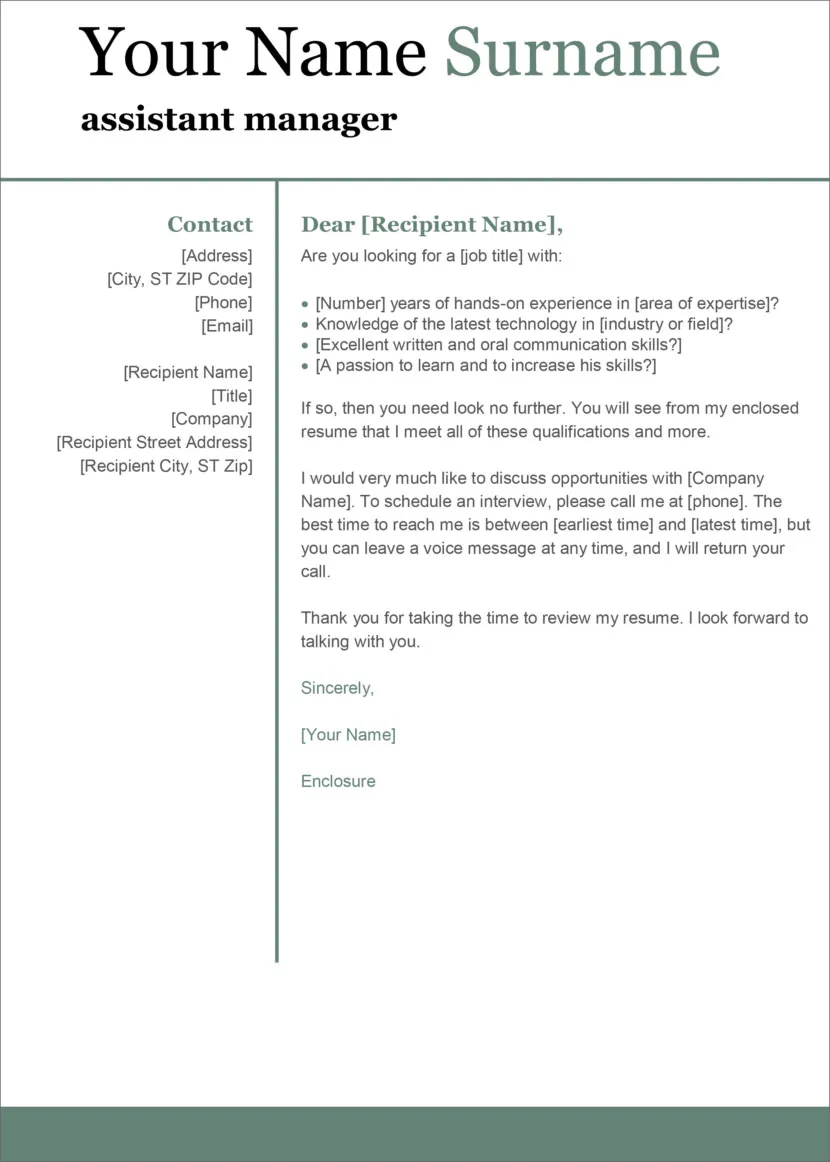What is a Cover Letter
A cover letter is a concise document submitted as part of your job application, alongside your resume. Its primary purpose is to introduce you to the hiring manager, express your interest in the position, and highlight why your skills and experience align with the job requirements. Unlike a resume, which provides a summary of your professional history, a cover letter allows you to showcase your personality, writing ability, and enthusiasm for the specific role and company. It’s your chance to make a strong first impression and persuade the employer to read your resume more closely. A well-crafted cover letter can significantly increase your chances of landing an interview, making it an essential tool in your job search arsenal. Consider it your personal sales pitch, tailored to each opportunity you pursue.
Why is a Cover Letter Important
In today’s competitive job market, a cover letter can set you apart from other candidates. It allows you to explain gaps in your resume, demonstrate your understanding of the company and the role, and showcase your writing and communication skills. Many hiring managers consider a cover letter as a crucial part of the application process, often viewing it as an indicator of your interest level and attention to detail. It offers a valuable opportunity to personalize your application and demonstrate how your qualifications match the specific needs of the employer. By tailoring your cover letter to each job, you show that you’ve taken the time to understand the role and are genuinely interested in the opportunity, thereby increasing your chances of getting noticed. Ignoring this step could mean your application goes unnoticed.
Key Components of a Cover Letter
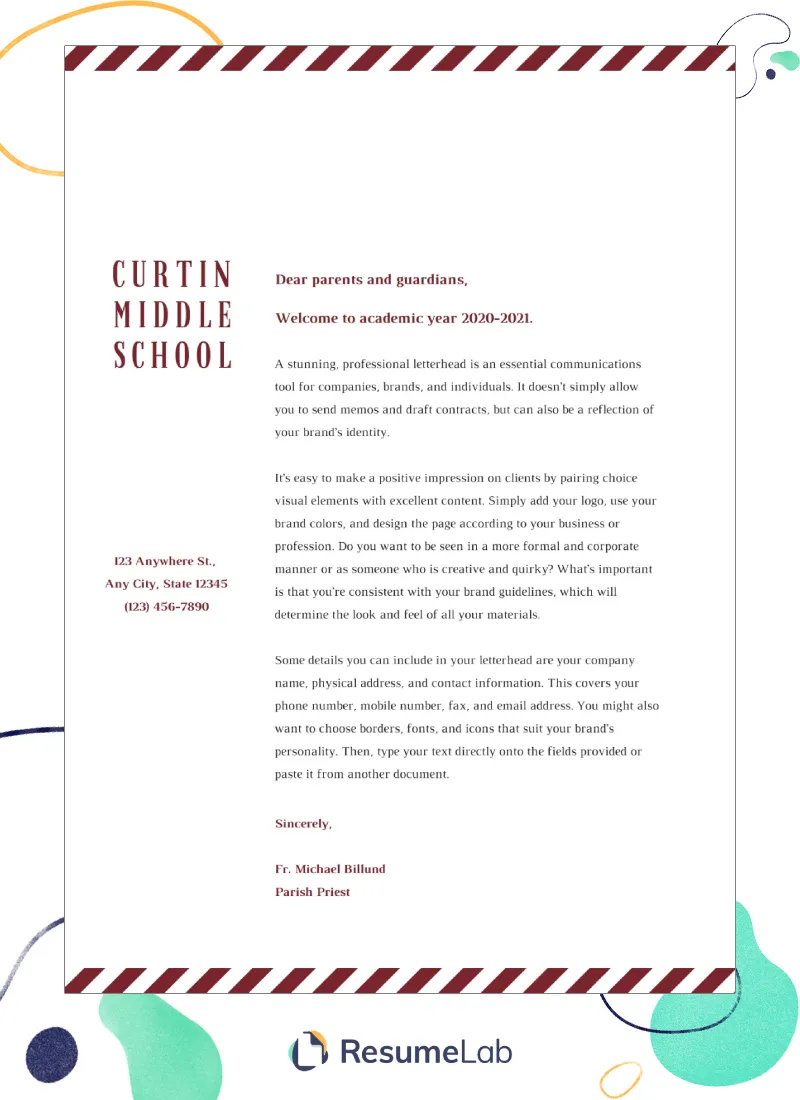
A strong cover letter typically includes several key sections, each serving a specific purpose in conveying your message to the hiring manager. These components work together to create a compelling narrative that highlights your suitability for the role. Understanding these sections and how to structure them will significantly enhance your ability to write a cover letter that effectively communicates your qualifications and interest in the position. Properly organizing these elements is essential for a professional and impactful presentation.
Heading Section
The heading of your cover letter should include your contact information, the date, and the employer’s contact information. This section ensures that the recipient can easily reach you and provides important details about when the letter was written. It’s a standard practice that sets the tone for a professional communication. The heading should be neatly formatted and consistent with your resume, using the same font and style to maintain a cohesive brand.
Applicant’s Contact Information
At the top of your cover letter, include your full name, phone number, email address, and optionally, your LinkedIn profile URL or professional website. This information should be easy to find and read, allowing the hiring manager to quickly contact you if they are interested in your application. Ensure that your email address is professional and appropriate for the job application. Also, check that the contact details are current and functioning correctly before sending your letter.
Date
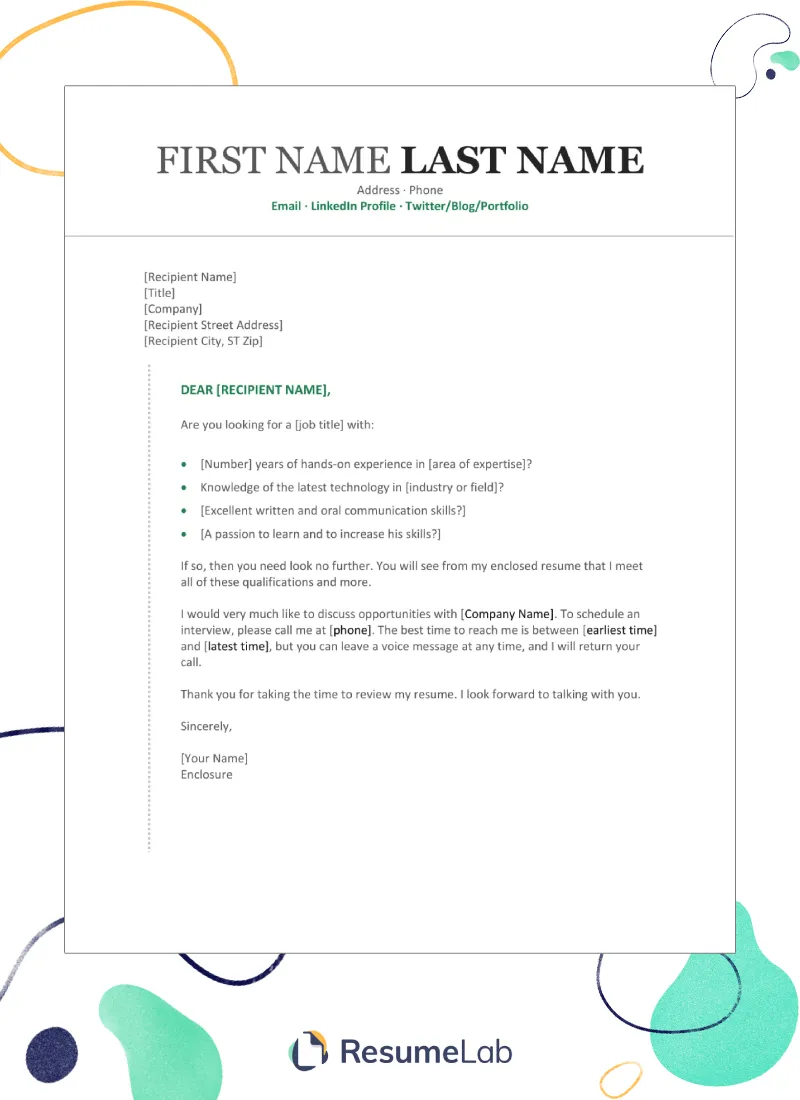
Below your contact information, write the current date. This helps the employer understand when the application was submitted. The date should be formatted in a standard way, such as Month Day, Year, to ensure clarity. Avoid abbreviations or unusual date formats unless specifically requested by the employer.
Employer’s Contact Information
Include the hiring manager’s name (if known), their title, the company name, and the company’s address. Researching the name of the hiring manager shows initiative and attention to detail. If you can’t find a specific name, use the title of the position or a general greeting like ‘Hiring Manager.’ This information should be formatted correctly to show that you’ve paid attention to the details and taken the time to research the company.
Salutation
Begin your cover letter with a professional salutation. The most effective salutation is to address the hiring manager by name, such as ‘Dear Mr./Ms. [Last Name].’ If the name is unavailable, use a general greeting like ‘Dear Hiring Manager’ or ‘Dear [Department Name] Team.’ Avoid generic greetings like ‘To Whom It May Concern,’ as they make your letter feel impersonal. Make sure the salutation matches the tone and formality of the company’s culture.
Body Paragraphs
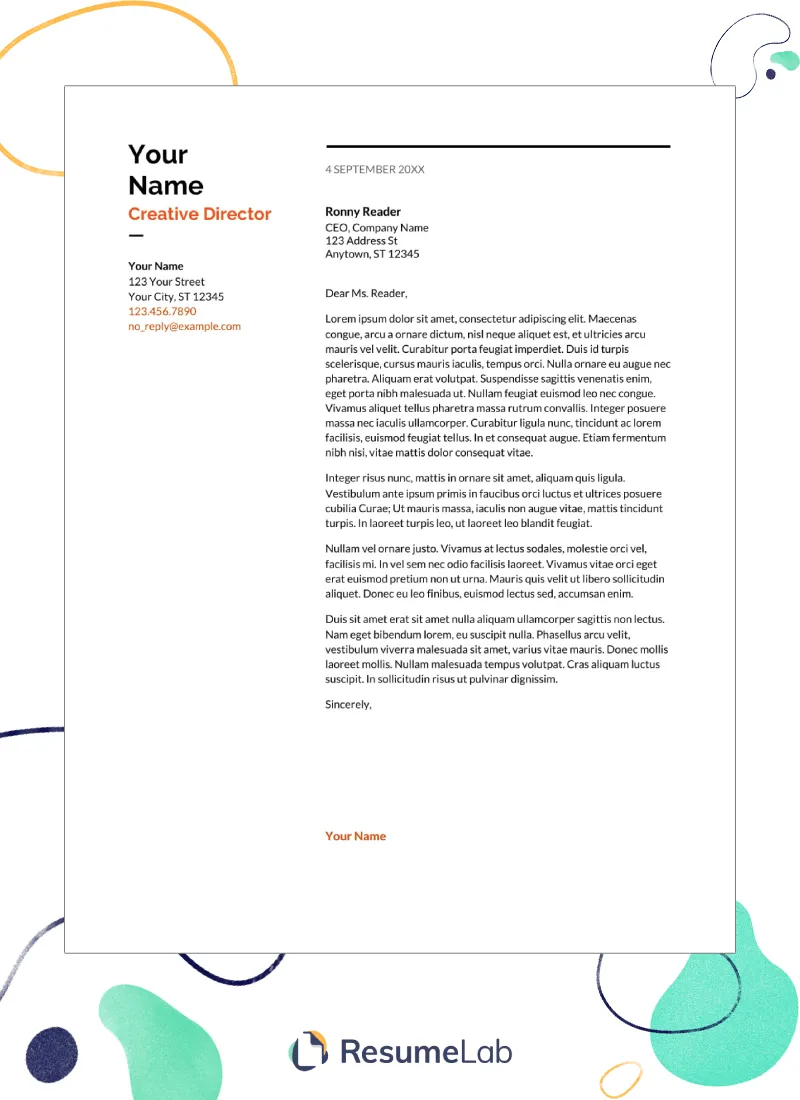
The body of your cover letter is where you showcase your qualifications, express your interest in the role, and explain why you’re a good fit for the company. It typically consists of three or four paragraphs that follow a logical structure, providing a clear and concise narrative. Each paragraph should focus on a specific aspect of your application, helping the reader understand your capabilities and enthusiasm. Crafting a well-structured body is essential for capturing the hiring manager’s attention and making a positive impression.
First Paragraph Purpose
The first paragraph should state the purpose of your letter, the position you’re applying for, and where you found the job listing. Briefly mention why you are interested in the company and the role, showing your enthusiasm from the start. This paragraph sets the tone and provides a brief overview of your application. Make it clear and concise, avoiding unnecessary details or jargon that could confuse the reader. Keep it focused and engaging, creating interest in reading the rest of your letter.
Second Paragraph Skills and Experience
The second paragraph should highlight your relevant skills, experience, and accomplishments. Provide specific examples that demonstrate how your qualifications meet the requirements of the job description. Quantify your achievements whenever possible to show your impact. Tailor this paragraph to match the job requirements, emphasizing the skills and experiences most relevant to the role. Show, don’t just tell, by backing up your claims with concrete examples.
Third Paragraph Call to Action

In the third paragraph, reiterate your interest in the position and the company. Mention how your skills and experience align with the company’s goals. Express your enthusiasm for the opportunity to contribute to the team. Include a call to action, such as requesting an interview or expressing your availability for further discussion. Make it clear that you are eager to move forward in the application process and that you are proactive.
Closing and Signature
End your cover letter with a professional closing, such as ‘Sincerely,’ ‘Best regards,’ or ‘Thank you.’ Use a closing that is appropriate for the company’s culture and the tone of your letter. After the closing, leave space for your signature (if submitting a printed copy) and type your full name below. Ensure the signature is clear and legible. This is the final element in your cover letter, so it should reflect your attention to detail and professionalism.
Formatting and Design of Cover Letter
The formatting and design of your cover letter are just as important as the content. A well-formatted cover letter is easy to read and makes a professional impression, while a poorly formatted one can distract from your qualifications. Paying attention to the layout, font, margins, and spacing will help you present your skills and experience effectively. Ensuring a clean and organized presentation can greatly enhance the readability and appeal of your application.
Font Choice and Size
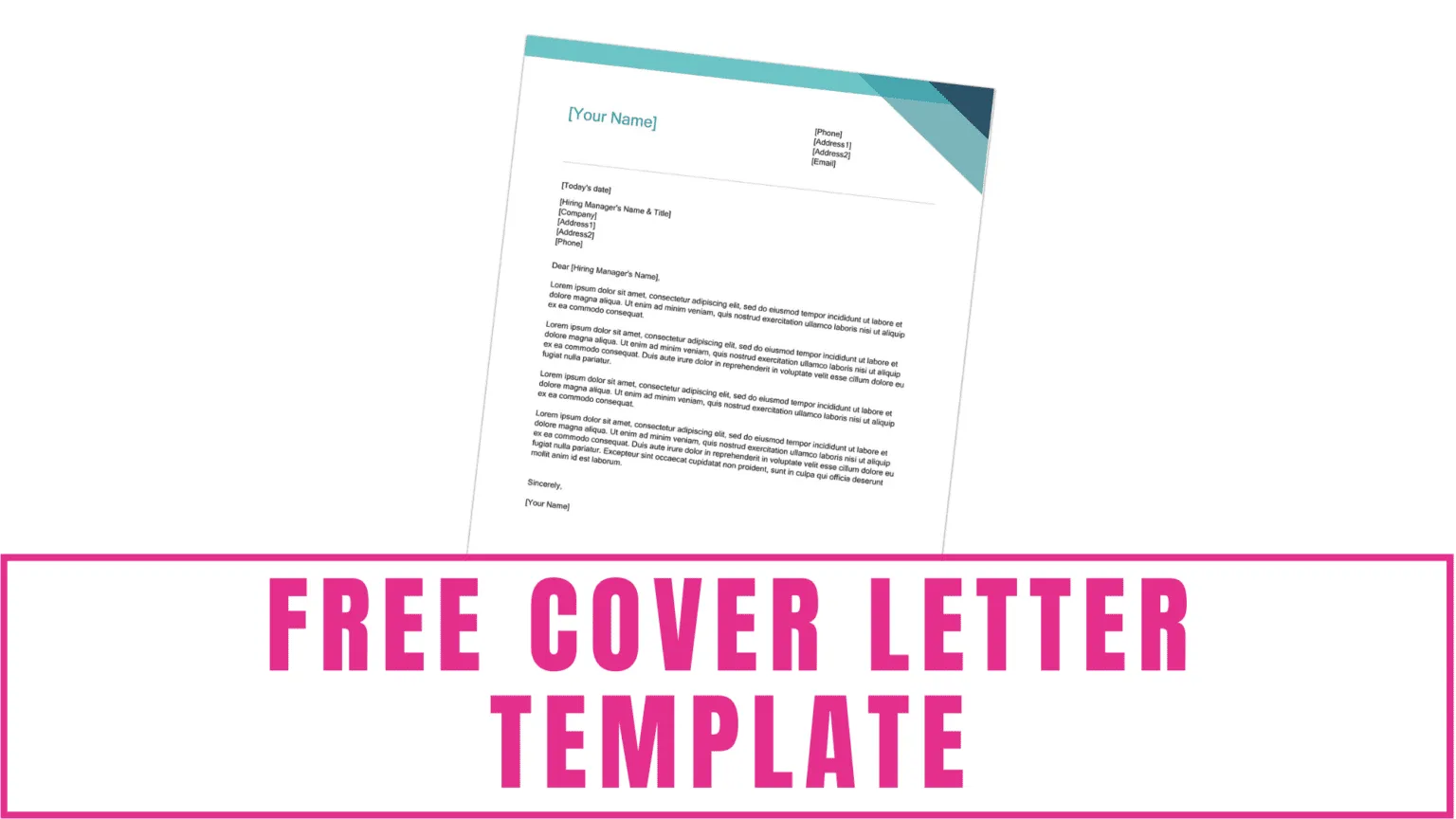
Choose a professional and readable font such as Times New Roman, Arial, or Calibri. The font size should be between 10 and 12 points to ensure readability without appearing too small or too large. Avoid using overly decorative or unusual fonts, as they can detract from the content. Consistency in font choice throughout the letter is crucial for a polished appearance. Select a font that is easily accessible to ensure it displays correctly on all devices.
Margins and Spacing
Use standard one-inch margins on all sides of your cover letter to provide adequate white space. This makes the document easier to read and prevents it from appearing cluttered. Use single-spacing within paragraphs and double-spacing between paragraphs to create visual breaks. Maintain a consistent and professional layout throughout the entire document. Proper margins and spacing are essential for a clean and professional appearance. Ensure alignment is consistent.
Proofreading and Editing
Before submitting your cover letter, proofread and edit it carefully. Check for any grammatical errors, spelling mistakes, and typos. Use a grammar checker tool to help identify errors you might have missed. Read the letter aloud to catch any awkward phrasing or sentences. Ensure the language is clear, concise, and professional. Having a second set of eyes to review your cover letter can be invaluable. This step is critical to demonstrate attention to detail.
Cover Letter Templates Free Availability
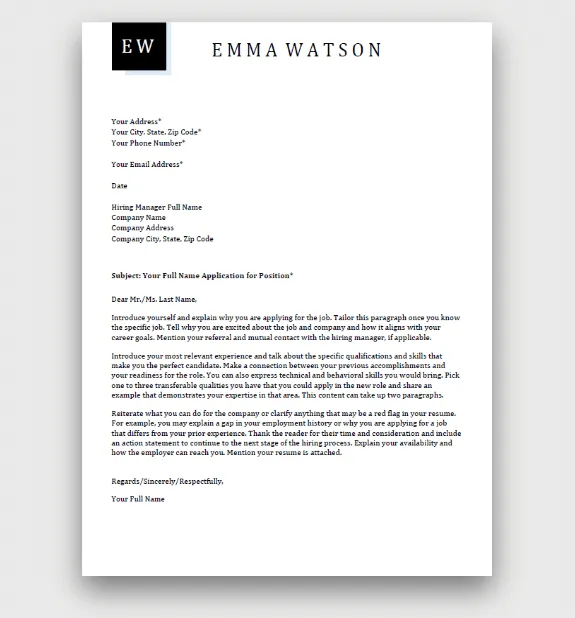
Many resources offer free cover letter templates, saving you time and providing a solid structure to build from. These templates provide pre-formatted layouts and examples that you can adapt to your needs, making it easier to create a professional cover letter quickly. Utilizing free templates is a smart way to get started and avoid the hassle of creating a letter from scratch. Exploring these resources helps you understand the key components and format of a successful cover letter.
Where to Find Free Templates
Numerous websites offer free cover letter templates. Websites such as Microsoft Office, Google Docs, and various job search platforms provide a wide variety of templates in different styles. Search for resources that provide templates in various formats such as Word or Google Docs. Review different templates to find one that fits your needs. Download these templates and customize them to match your industry. Take advantage of these valuable resources to streamline your writing process.
Customizing Templates for Your Needs
While cover letter templates provide a great starting point, customize them to reflect your personal brand and the specific job you’re applying for. Tailor the content to match the job description and highlight your relevant skills and experiences. Adjust the formatting and design to align with your preferences and the company’s culture. Personalize the template by adding your contact information, using a professional font, and ensuring the layout is clean and easy to read. Personalizing a template increases your chances of creating a memorable impression.
Cover Letter Help Free Tools and Resources
Several free tools and resources can assist you in writing and refining your cover letter. These tools can help you identify and correct errors, improve your writing style, and find inspiration for creating a compelling cover letter. Leveraging these tools can enhance the quality and effectiveness of your job application.
Grammar Checkers
Use online grammar checkers such as Grammarly or ProWritingAid to identify and correct errors in your cover letter. These tools help you catch spelling mistakes, grammatical errors, and punctuation issues. Some tools also offer suggestions for improving your writing style, such as suggesting synonyms or rephrasing sentences. Regularly utilizing grammar checkers ensures your letter is polished and professional.
Online Cover Letter Builders
Explore free online cover letter builders that guide you through creating a cover letter step-by-step. These tools often provide templates, prompts, and suggestions to help you write each section of your letter. They can streamline the writing process and help you create a well-structured cover letter quickly. These builders allow you to input your information and automatically format the letter. Use this if you are unsure where to start.
Cover Letter Examples Inspiration
Review cover letter examples to gain inspiration and understand how to effectively communicate your skills and experiences. These examples provide different styles and approaches to writing a cover letter, giving you ideas for your own letter. Analyze the language, structure, and tone of the examples. Adapting elements of successful examples can significantly improve the quality of your writing. Look at cover letter examples for your industry.
Best Cover Letter Examples
Browse cover letter examples from reputable sources, such as career websites and professional organizations. These examples demonstrate how to tailor your cover letter to different industries and job types. Study how experienced professionals craft their letters to showcase their qualifications and express their enthusiasm. Analyze the examples to identify key elements such as strong openings, impactful descriptions of skills, and a clear call to action. Choose examples that align with your career goals to better align with your own goals.
Mistakes to Avoid in Cover Letters
Avoid common mistakes that can detract from your cover letter and decrease your chances of getting an interview. These mistakes can range from grammatical errors to a lack of personalization. Identifying and avoiding these pitfalls is essential for creating a compelling and effective cover letter.
Common Errors
Avoid grammatical errors, spelling mistakes, and typos. Proofread your cover letter carefully before submitting it. Ensure all contact information is accurate and current. Do not use jargon or overly complex language. Avoid generic phrases that could apply to any job. Ensure your formatting is consistent and professional, and the language is clear and easy to understand.
Tone and Language Pitfalls
Maintain a professional and enthusiastic tone throughout your cover letter. Avoid being overly casual or informal. Do not use negative language or criticize previous employers. Be genuine and authentic in expressing your interest in the position and the company. Refrain from being too wordy. Choose your words carefully, aiming for clarity and conciseness. Ensure the language is appropriate for the company’s culture.
Cover Letter for Different Job Types
Cover letters need to be tailored based on the specific job and your professional level. Tailoring your cover letter to the type of job you’re applying for is important for highlighting the most relevant skills and experiences. Whether you’re an entry-level candidate or an experienced professional, or applying for a specific industry, customizing the content and language will increase your chances of getting noticed.
Cover Letter for Entry-Level Positions
For entry-level positions, highlight your education, internships, volunteer work, and any relevant skills you’ve gained through these experiences. Emphasize your eagerness to learn and your willingness to take on new challenges. Show your enthusiasm and adaptability. Focus on transferable skills that can apply to the job. Tailor the content to the company and the specific requirements of the role. Make it clear you’re eager to start your career.
Cover Letter for Experienced Professionals
Experienced professionals should highlight their accomplishments and results. Focus on your achievements and quantifiable contributions in previous roles. Show how you have addressed challenges and achieved positive outcomes in the past. Tailor your letter to show how your experience is a direct fit for the new role. Provide specific examples of how your skills align with the job requirements and how you can benefit the company. Show your leadership ability and show how you can improve the workplace.
Cover Letter for Specific Industries
Tailor your cover letter to the specific industry you are applying to. Research the industry and the company to understand the specific needs and values. Highlight the skills and experiences most valued in that sector. Use industry-specific language and terminology where appropriate. Tailor your letter to demonstrate your knowledge and familiarity with the industry’s requirements and culture. Adjust the tone to align with industry norms and expectations.
